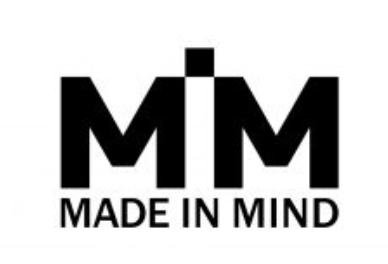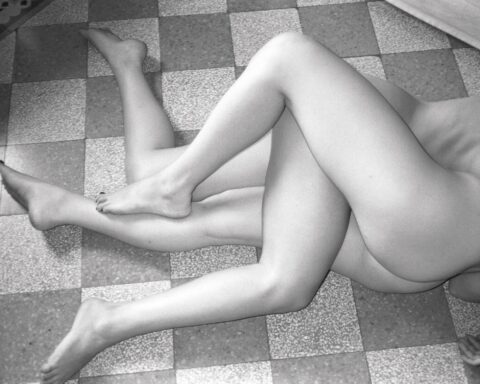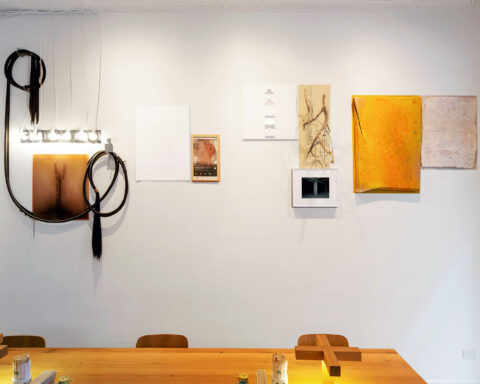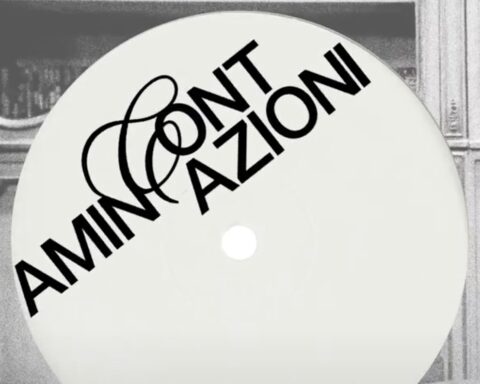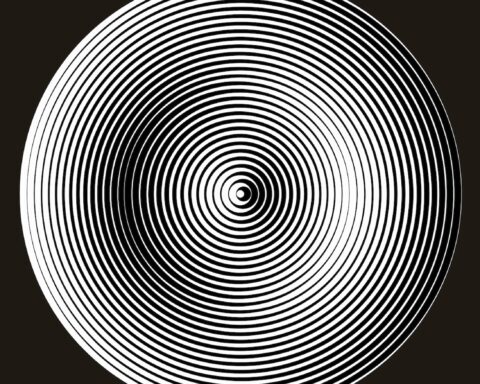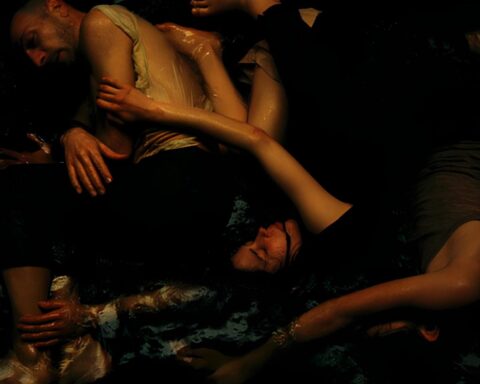Portafortuna is a public program presented in Florence by Toast Project Space that aims to bring together different independent Italian entities from the world of contemporary visual culture. In an open perspective independent spaces can help decentralize the contemporary art world, letting new ideas emerge while developing a unique identity. Independent art spaces can also be a significant alternative point of view to understand the development of new contemporary art practices. During the talks at the Portafortuna program the dialogue led to different definitions of the independent entity itself as well as of the word “independent” being a controversial term that can be used or not, depending on the interpretation of this definition. Discussing a definition became a way to relate with a complex reality, without letting the definition define ourselves, choosing to not define but leveraging the commutative dialogue about it, being the best way to find subjectivity where needed.
Nothing should be accepted as fixed, permanent, or ‘given’—neither material conditions nor social forms. (Xenofeminism, Helen Hester)
The alternative spaces are no more motivated by filling a void as much as forming a self-shaped new culture in which a community (using the wider meaning of the word) can find different perspectives and new models. Crossovers between institutions and independent spaces are very common due to the always flexible and heterogeneous nature in which independent spaces are created.
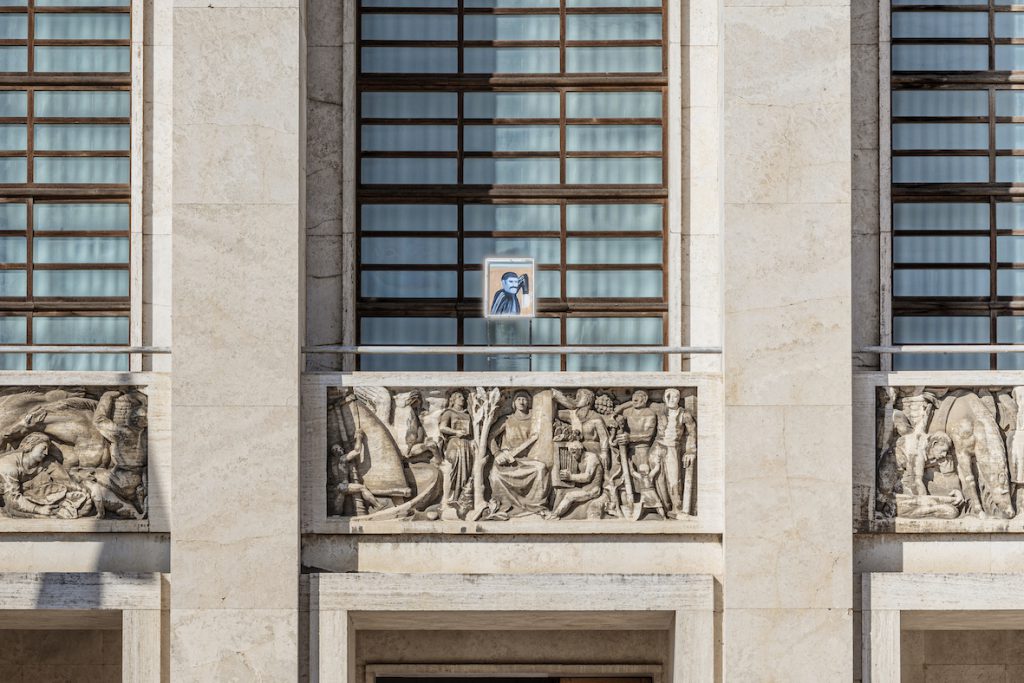
Entering in the specificity of the meetings, the first talk: A space for research, production and experimentation: non-profits and institutions has been a relevant hint for a further reflection on the topic. Linked to the non-conforming nature of the spaces – as touched upon in the introduction – Martina Aiazzi Mancini, moderator of this talk, started the conversation with a reflection. She quoted Leonardo Merlini, journalist and literary critic, about the future of contemporary art and the overcoming of all differences in artistic practices, in which he hopes a “tendency to blur”, for the future of the arts, to extend the contemporary field. Davide da Pieve, talking about DAS (Dispositivo Arti Sperimentali) in Bologna, referred to the multi disciplinarity and crossability of a space and pointed out the fact that DAS was created from a peculiar bond with a political institution. The DAS project was born from a call from the Bologna city council that financed a space with 14 associations in cohabitation but each one related to a different field.
“It is difficult to have a structured logic inside this ‘co-working’ space because the space is totally independent and self managed despite the collaboration with the townhall administration. In this process with different activities is kind of a natural necessity to be somewhat blurred” he said. Lorenzo Balbi, artistic director of MamBo, referred to a 2018 MamBo exhibition titled That’s it where he selected Italian artists born after 1980.
One of the most interesting outcomes was a conversation between Lucrezia Calabro Visconti and Gabriele Tosi called A Compact Guide to Independent Art Production in Italy from 2008 to Today in which they try to categorize the different typologies of independent spaces managing to collect 7 categories: self funding spaces, proto galleries, private collection spaces, illegal occupations, results of calls, proto-institutions, commercial project spaces.
Balbi pointed out a difference in the possible aims between independent spaces and institutions: while independent spaces, as filters of experimental energies, can or not be linked to the territory, the public museum should be linked to it, being open to a reference public.
This difference opened a wide discussion based on different points of view.
Stefano Giuri of Toast Project Space for example explained how it was impossible not to create a bridge with the territory. Manifattura Tabacchi (a former state-owned Tobacco products factory) was closed for many years so reopening such a vast space brought the community close to it. Being in a residential area people were curious to understand what was happening inside it.
The discussion was verging on how independent spaces have more lines of action open to them compared to institutions.
Simone Ciglia of The independent, MAXXI Roma, explained how the independent project coincides with a tendency of the institutions, since 2000 till now, to have a major interest in independent spaces. The artistic director of MAXXI strongly wanted this long term mapping project to work like a portal between the institution and independent spaces.
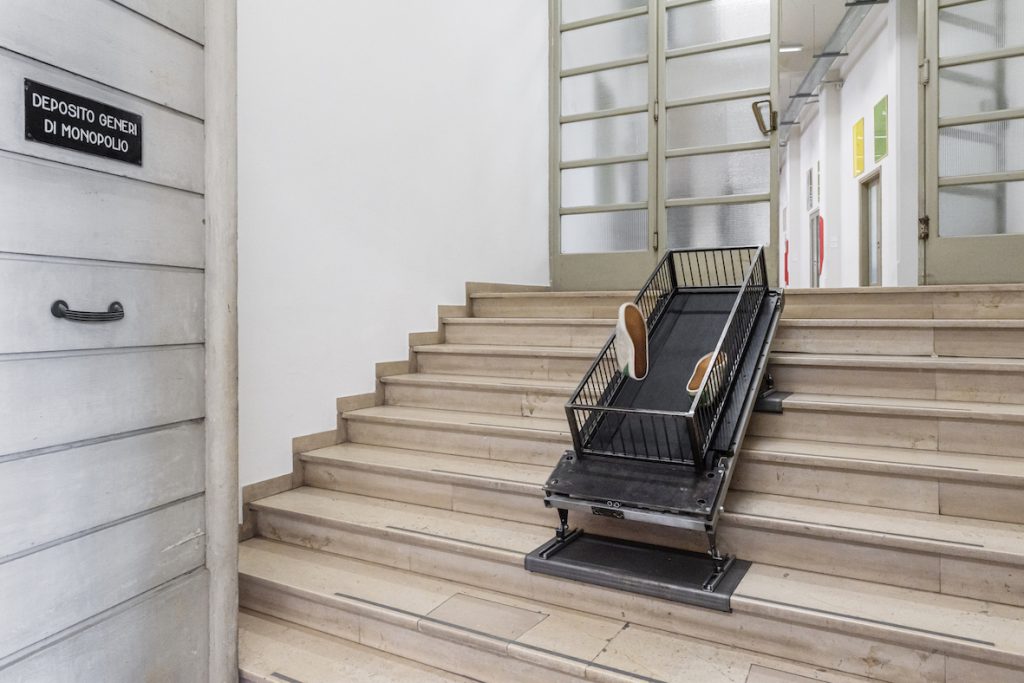
Curated by Toast Project Space Courtesy of Manifattura Tabacchi Photo Leonardo Morfini
New development models are rising. Quoting Hou Hanrou’s essay A third way “… many art-world professionals are transitioning between the commercial and nonprofit sectors” how to build this new model? Hence the MAXXI-sponsored project as a map of independent spaces with an open call. Paolo Mele of Random spoke, in another conversation, about the dichotomy between us/them, them as the other, the independent. based on this definition, independent spaces have different possibilities such as the production of new artworks, professional incubators, and outside horizons that give them more freedom and time without constraining them into providing a continuity.
The conclusion reveals that we can arrange this dichotomy as a: us/us.
To sum up: the political pressure is not about the subjects but about the structure so it is felt more by institutions and less by independent spaces.
Shifting the subject but remaining in the same meaning container, the next talk, Economic sustainability perspectives within the independent universe, was held by a group of 7 people from different independent realities.
Anna Dormio (Kunstschau, Lecce), Francesca Finotti (Brace Brace, Milano), Paolo Mele (Ramdom, Gagliano del Capo), Rebecca Moccia (FEA Lisboa), Matteo Mottin (Treti Galaxie, Torino), Michele Bertolino (Il Colorificio, Milano), Giulio D’Ali Aula (INCURVA, Favignana). The moderator was curator Gabriele Tosi.
There is not a single economic model but different economic strategies that sometimes are also conceptually related to the independent spaces projects. How these spaces employ their funds and if there is an ethic and aesthetic way to use money in these endeavours is the main question.
Michele Bertolino of Colorificio explained their situation: they are self funded, they pay the production and a fee for the artist. They wanted to create space-specific artworks along with the artists they select, following their curatorial interest. This became the identity of the space itself.
Rebecca Moccia of Festival Fea, Lisbon, talked about the aim of the space: to link with existing spaces closing a gap. Being a festival it creates the opportunity to share a confrontation between artists and collaborative practices. They want to create a different view, highlight the existent independent network, put together the individual spaces of the territory. The Incurva’s project, as described by Giulio d’Ali, instead is based on a residency in the mediterranean island of Favignana, the residency is free and the artists receive a fee but they don’t have to produce anything. The focus is to create relations more than a final work or organized project. They prefer to create a link with the community and the territory. They never define the output of the residency.
Paolo Mele with Random in Gaglianò del capo, spoke about the territory that is geographically difficult and complex also in relation with the community and the institutions.
Anna Dormio of the 10 artists collective Kunstschau, Lecce, said how – after graduating from an academy – to invest in an independent space can be a way for an artist to self fund their identity and their research. Lecce was empty and the aim was to bring a landmark for art students and people of the territory. The space is inside a garage in a suburban area of the city.
Francesca Finotti talked about Bracebrace in Milan. It was a private studio, then became public and an exhibition space. They produce solo exhibitions of different artists. Tretiegalaxie by Matteo Mottin with Ramona Ponzini has a low-impact aesthetic format so it is also an anti-system outfit. They want to create projects that should exist in their opinion. For example they created an exhibition for just one spectator that was randomly extracted, working on the elitism of the art system. Of course there is no direct sustainability based on non functionality of art. The aim is to have a dialogue with the past and future.
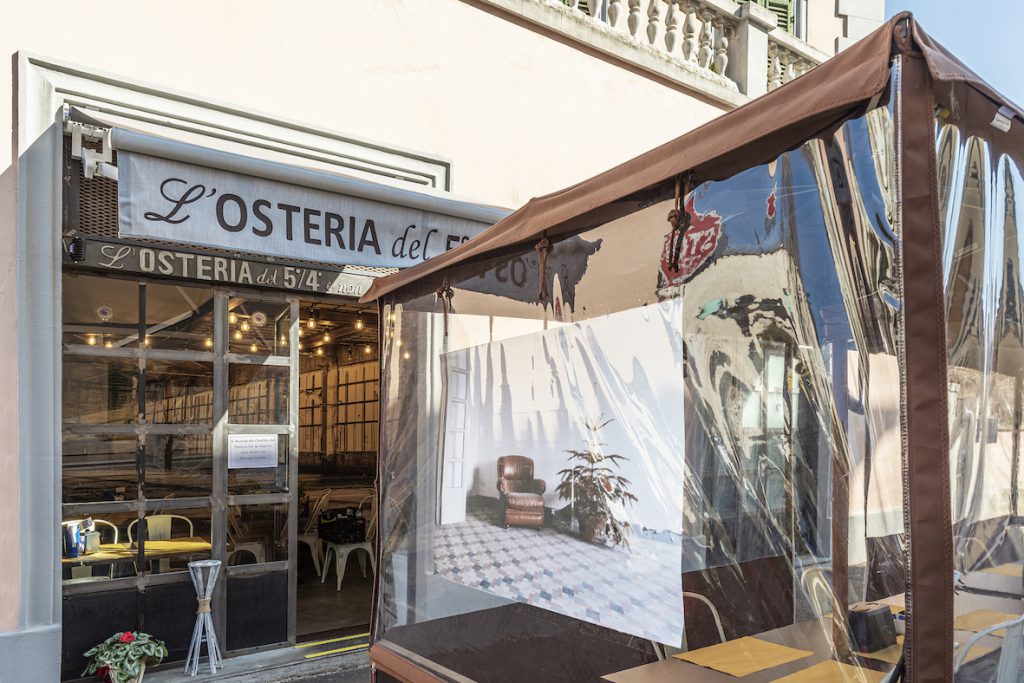
Curated by Toast Project Space Courtesy of Manifattura Tabacchi Photo Leonardo Morfini
On the same economic model topic the next question was if being recognized by the art system could be favorable or detrimental.
Incurva – not having any production purpose – is not economically self sufficient, but the professionalization is not linked to the economic aspect. It is an act of love.
Rebecca Moccia explained how in Fea there is an economic sustainability thanks to a partnership with an advisor that takes care of fundraising and collaborations with the art management course at University of Lisbon. Not having funds can be a benefit for the spontaneous output and the minor amount of work required, but at the same time it is an important practice to raise funds that bring an acknowledgment with them, to make an independent project sustainable can be a way to promote them.
Paolo Mele’s answer pinpointed different processes: the fact that a project is recognized by an institution doesn’t mean that it is also recognized by the community, it’s a matter of responsibility in front of the community if you are administering public money. Independent projects are not economically sustainable by definition. They are like “positive waste”. They self fund everything. They try to create values and contents.
Professionalization is another topic: the shared conclusion was that you don’t need to be acknowledged by institutions and the art world to be a professional, also: the fact that you are not economically sustainable doesn’t mean that you are not a professional.
Mele remarked: “… we are not an independent space and I don’t believe in the definition of independent space. An independent space exists where there is no question about sustainability and you can do what you want. But when you work trying to raise funds through calls you are not independent but inter-independent because your work is strongly linked to other people’s work. The terminology of independent space is usually created by the institutions to create a dichotomy or an opposition.
The outside economic model about sustainability is always a social model and not a commercial one. Being independent from commercial logic is to experiment and have research practices that have no output in the commercial field. It is easier to finance this research through social institutions.”
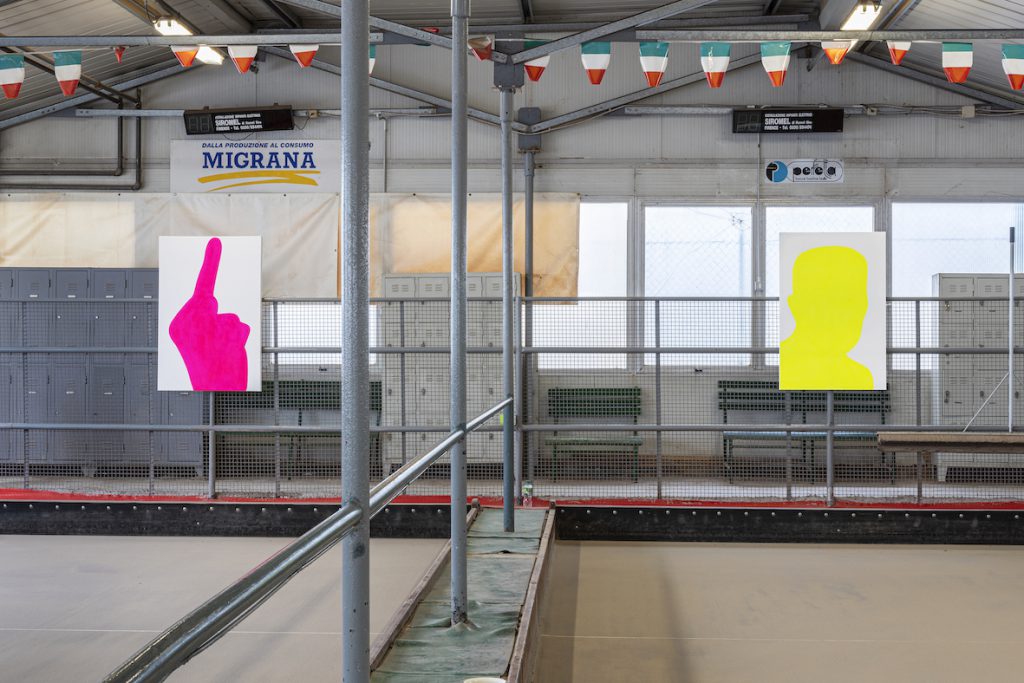
The last question was: is it important to communicate to the public the economic model beneath the work? To understand the meaning of the work?
Do you question about how much work there is for a piece of art? Also aesthetically? We can let the readers think about it. An open question on a personal perception about art and the economic world.
The next conversation: Independent publishing as a space for critical and artistic production was led by Marco Marelli from Forme Uniche.
These realities and projects not only produce books or book reviews but they are also a different way for artists to express themselves and express cultural production in the editorial field.
Pietro Gaglianò talking about Scripta festival, a book festival held once a year in Florence, explained how the festival’s aim is total autonomy, not independence. “Independence – Gaglianò continues – is not a practicable concept and also not desirable. […] I am dependent from society, I observe it changing and I am an outcome and a visible epiphany of it. We work in culture so we depend on society, the public, need for artists and art, but we are autonomous so we isolate a possibility in which all the decisions are made on a scale of values that we define and find important, outside the trending field and the commercial market. This autonomy is something that we strongly defend.”
Dafne Boggeri of Sprint, Independent Publishers and Artists’ Books Salon, in Milan, born in 2013 with Sara Serighelli, created a format that can open the independent publishing space to the artistic space and attract artists to Milan who act in a relation with the public, to bring energy and change to the territory.
Valerio Mannucci of Nero illustrated how Nero was a magazine and then became a publishing house with people from different fields, a platform where different formats are explored. Inside Nero magazine there is NOT, a format that is a new way to imagine publishing inside Nero, dealing especially with contemporary radical thinking. It is mainly a translation project aimed to reframe different thinkers and philosophers inside the italian cultural circuit.
Nero caters to a transnational circuit while NOT is intended to work in the Italian context.
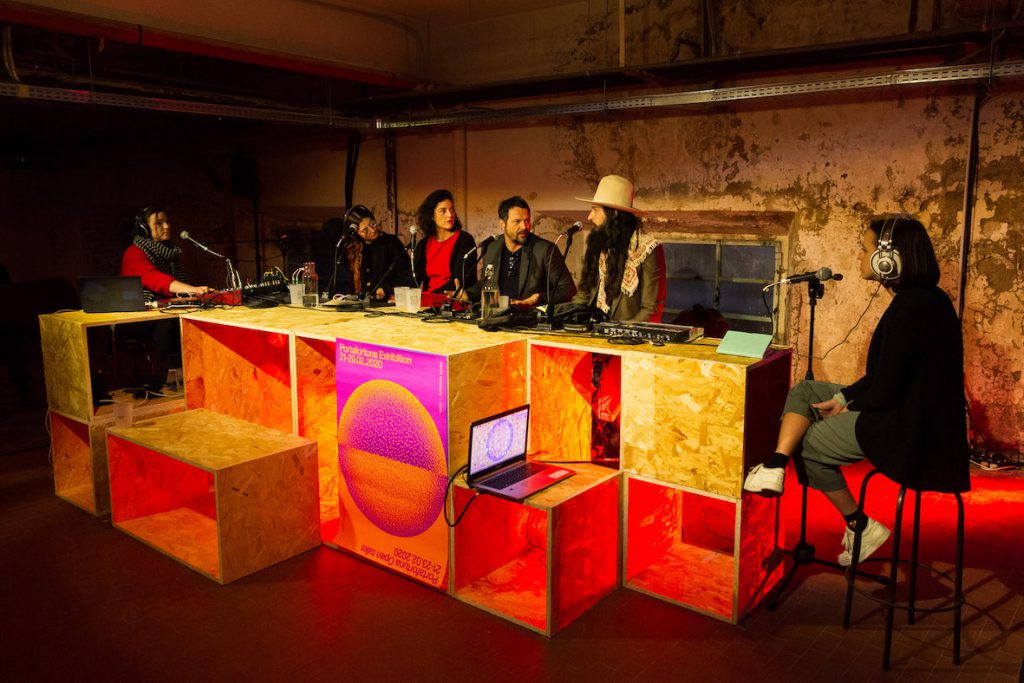
PORTAFORTUNA Open Talks, Mappature storiche e istanze del momento in un confronto generazionale 22.02.2020, Manifattura Tabacchi Organized by Stefano Giuri, Martina Aiazzi Mancini, Alessandra Fredianelli From the left: Serena Schioppa (Castro, Rome), Virginia Zanetti (Estuario Project Space, Prato), Mirko Rizzi (Marsèlleria, Milan), Luigi Presicce (Brown Project Space, Milan), Francesca Manni (moderator) Photo Leonardo Morfini
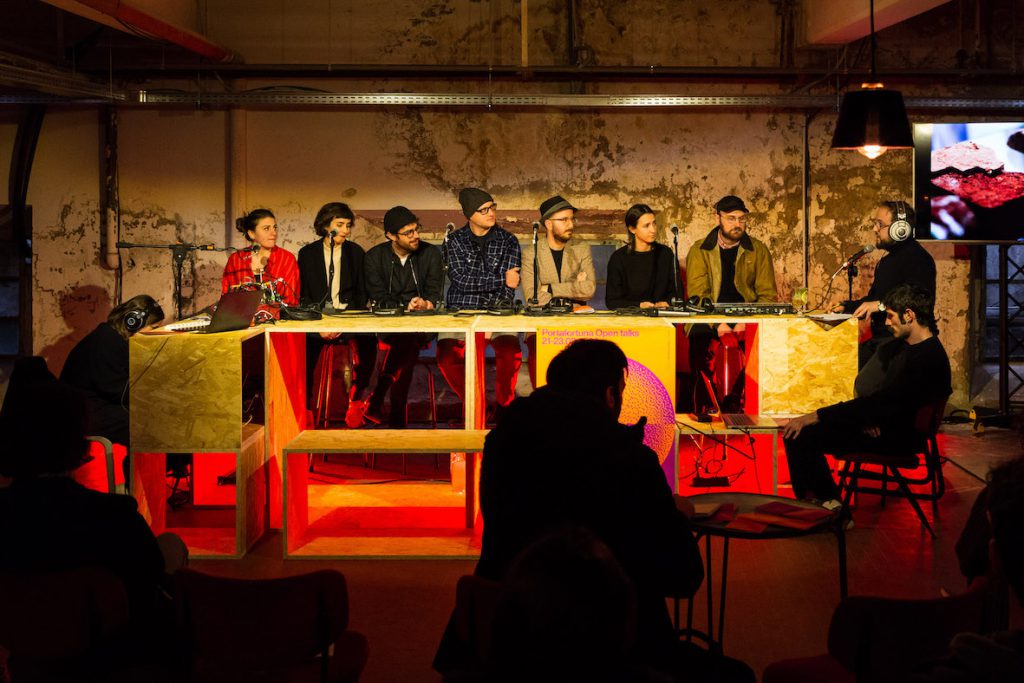
PORTAFORTUNA Open Talks
Prospettive di sostenibilità economica nell’universo indipendente
21.02.2020, Manifattura Tabacchi
Organized by Stefano Giuri, Martina Aiazzi Mancini, Alessandra Fredianelli
From the left: Anna Dormio (Kunstchau, Lecce), Rebecca Moccia (FEA, Lisbona), Michele Bertolino (Il Colorificio, Milan), Matteo Mottin (Treti Galaxie, Turin), Paolo Mele (Ramdom, Gagliano del Capo), Francesca Finotti (BraceBrace, Milan), Giulio D’Alì Aula (Incurva, Favignana), Gabriele Tosi (moderator), Stefano Giuri (Toast Project Space)
Photo Leonardo Morfini
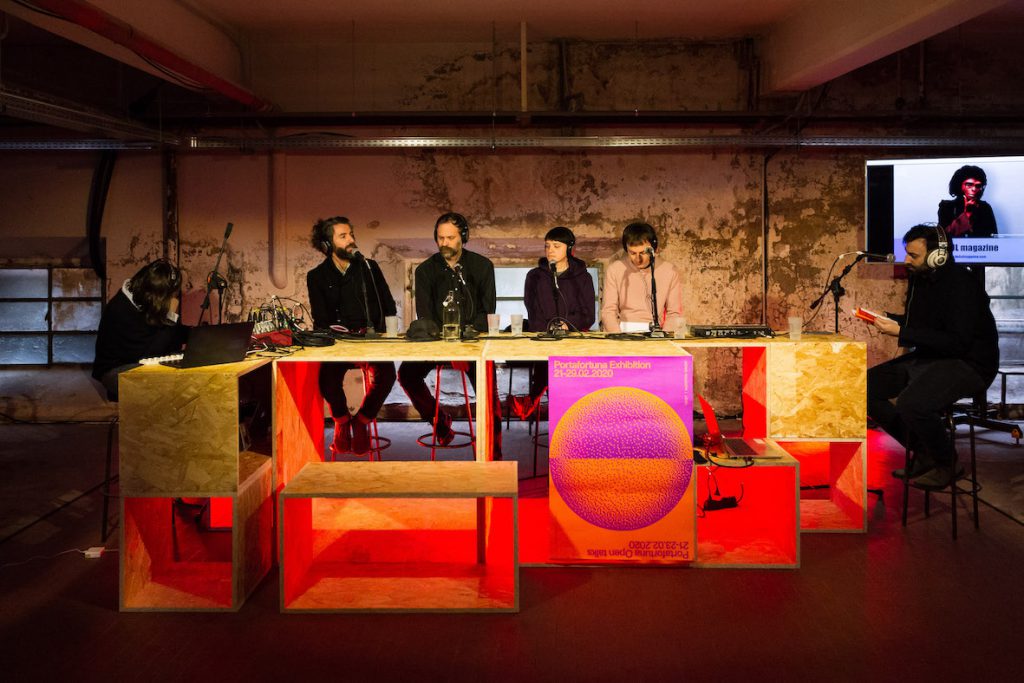
PORTAFORTUNA Open Talks, L’editoria indipendente come spazio di produzione critica e artistica 23.02.2020, Manifattura Tabacchi Organized by Stefano Giuri, Martina Aiazzi Mancini, Alessandra Fredianelli From the left: Pietro Gaglianò (Scripta Festival, Florence), Valerio Mannucci (Nero, Rome), Dafne Boggeri (SPRINT, Milan), Dario Giovanni Alì (Kabul Magazine, Turin), Marco Roberto Marelli (moderator) Photo Leonardo Morfini
Translation of underground books to spread radical thinking in Italy was also the reason to create Kabul, as Dario Ali said. Perceiving a void inside the cultural Italian landscape about some themes and some authors, Kabul was born in 2016 and it now has a composite format.
There is an online magazine with unedited and free downloads, translating texts but also producing essays and articles in between an academic magazine and a popularizing magazine. Kabul is also a non profit association that has many partnerships. Having collaborations with different realities adds something to each experience to find a way in a complex editorial landscape.
An independent publishing house is another branch of Kabul. It publishes books never before translated in Italian.
Taking forward the matter about independent publishing the discussion verged on how words are bricks that constitute our culture, how to understand what is important or not in the widespread creativity galaxy that we are living in.
Dealing with a creative explosion it is not always so simple.
Pietro Gaglianò explained that the subtitle of Scripta Festival is art by words, to underline that they deal with books without pictures, opening a possibility of understanding against every indoctrination practice even if selecting and choosing are implicit. The festival is held inside a bookstore/vegetarian restaurant to open it to a more informal public. Gaglianò’s target is to present independent publishing houses in an open dialogic dimension where not only the point of view of the author is proposed as legit but also the objection from that point of view. The purpose is to open a dialogue with the public proposing a horizontal pedagogic action: the creation of an open space for thought and the possibility to understand and learn with each individual’s tools, not with imposed or preimposed ones.
On the other side Valerio Mannucci explained that Nero is a cult reality and that there is a controversy about the fragmentation of different layers in this wide creativity. It is a fight against all the channels and formats that make up this overwhelming communication and cultural panorama.
Their choice is to have an antiformat like antimatter, a condition of existence; it is the grey zone in the cultural panorama that they are trying to find.
Kabul magazine does a lot of collaborations and meetings with different realities and artists that organize workshops about many topics to create definitions, to create a glossary. It is a collective writing workshop finding terminologies for different topics. It is a research platform for people of the sector.
Having talked about the publishing realities in abstract it is interesting to notice that print is a space and that we can relate also with books as objects inside a material culture perspective.
Amelia Jones said that everything is mediated. Everytime we approach something, we mediate it with our intellectual tools, Pietro Gaglianò pointed out. Dafne Boggieri’s approach – being a collector – is a possessive one, fascinated by the power of books as a space, by the relationship between architecture and graphic layout of the book and its flexibility. Not underestimating the power that this object, on its own, has as a vehicle of communication.
Printing and publishing is the process of the limit but not a limit in itself.
The visual aspect of a book can also be a recognizable strategy.
Kabul projects a strong and specific image in translating texts of artists. It differentiates itself from the image projected by big publishing houses.
The end of the discussion brought each participant to find a word or a definition linked to the subjects approached during the talk.
Dafne Boggeri used the word cultural biodiversity, as the hope for many voices for a wide view. Bibliodiversity.
Pietro Gagliano evidenced a dyad between understood and understandable used in a conversation between Lenin and Clara Zetkin in which she asked Lenin what was his idea of art. He answered that art must be understood by people. In Russian there were two translations of this quote, using both understood and understandable. The meanings are very different though.
Understood means that people must mature and find the conditions to understand art while understandable means that the art itself must be simplified to be comprehensible to as many people as possible, thus becoming propaganda.
The generational comparison between historical mapping and contemporary demands of independent spaces was the theme moderated by Francesca Manni. Some differences immediately emerged between still active spaces (Estuario and Castro) and spaces that are no longer active (Brown or Marselleria) temporarily on a hiatus. Brown and Marselleria stood as the first examples of independent spaces born in the Milanese area and were paradigmatic for many subsequent experiences. Both Luigi Presicce (Brown) and Mirko Rizzi (Marselleria) highlighted the total freedom of action and experimentation that characterized their exhibition events. Estuario and Castro have a tighter programmatic approach related to their different aims. Castro, as Serena Schioppa described, was born as a space for artist studies, there is a call for selection, a talk program, meetings with citizens and with other realities in the Roman territory. Virginia Zanetti presented Estuario as more centered on multidisciplinarity and didactics on the territory, developing workshops with art students and public schools “Estuario’s objective is to share with the public-at-large a contemporary art visual alphabet. Its objective is to bring the largest number of people towards contemporary art (which has often an elitist and selected public) and contemporary art to the largest number of people”.
The most relevant point that emerged during the talk was precisely the desire to sensitize that audience, both the habitually interested, and the occasional. On this aspect a small debate was born to understand how both typologies of independent spaces, one more officially directed to involve a different public and one more tout court, are at the end specular in reaching a wide public forging new connections.
One question was focused on the economic part which is mainly DIY but with some differences. The availability of Marselleria allowed Mirko a freedom of action, even only for high-impact installations, which Brown and Estuario have not had and still do not have. Castro was born from private funding, on their website there is a section totally dedicated to donations, and also for this reason it has a very specific program. Furthermore, the evolutionary awareness that Luigi and Mirko have matured is something that Estuario and Castro are still working on, being young realities. The possibility of evolving their status from artist-run space to gallery, is a question that both Mirko and Luigi have asked themselves. In particular Marselleria, after 10 years of activity, had a precisely structured staff, but the transformation into a commercial gallery would have led to a change in the foundations of the space. To sum up, the need to have a working space, in which to exhibit and sensitize citizens to emerging contemporary art are the common points that emerged among all. Despite this there are many small differences given above all by the intrinsic nature of the four realities: territory, public, economy and also temporality.
The Portafortuna exhibition is held in different places, starting from Manifattura Tabacchi and involving the neighborhood, bringing the works inside public and private spaces, from the local bar to the hairdresser. Independent spaces being the topic of the Portafortuna program, it is a striking move to transform an independent space – defined as such – where exhibitions usually take place into a “dependent” space in which the dialogical exchange with the territory defines the exhibition itself. The holistic system of the exhibitions moves around the Piazza Puccini area. The area is dominated by the Manifattura Tabacchi built in 1940 and the recreational club for workers that is now the Puccini Theatre. The area is historically linked to the activity of the Manifattura Tabacchi. The works (and the process of making them) entered the daily life of the people living in the area inspiring debate.
In the Puccini bar the work of Jacopo Buono recreates, in a little corridor behind the slot-machines, a T.E. (A).Z (title of the installation) Temporary Enjoy (Automated) Zone in which the theory of Hakim Bey’s TAZ is overlapped and short circuited being situated in the recreative context of distraction versus the alienation of work. As a TAZ is a liberated area in which someone can be free and new collective ways can be explored, the TEAZ can ironically celebrate (the work is made with helium balloons) the autonomy of a brief moment in a workday.
The Card of the Sun by Anna Capolupo is placed in the main window of a barber shop. The installation is a non-experience made of time and space but it is also a process in which cleaning the window of the old barber shop gathered together the people that live nearby to observe that act as an unexpressed ritual. Inside the Italian bowling hall there are two paintings by Matteo Coluccia, Puttanificio 1 and Puttanificio 2 displaced as two targets of spectacular and provocative gestures emphasized by fluo colours. In The Circolo Arci Mario Bencini is a so-called, literally translating, House of People (community centers, a kind of social association that originated from the European experiences at the end of the 19th Century: a proletarian dream of a place for the working class’ culture and leisure) there is You do what you can a silicone sculpture with the shape of a bee that represents the most operative animal, but in this case is nailed to the wall, like a crucifix, that with its immobility refuses to live the productive mechanism and automatism finding a new self expression while in the same room old people are usually loudly playing cards. In a room under the Circolo Gabriele Mauro’s work, Biennio, is composed by two unopened identical calendars of the same year with the same price and with the same image of La Velata by Raphael. The installation is a work in progress and also a monument of a still time that we can imagine without experiencing it. Lungo l’Affrico by Marco Pace is a vision of the anthropocene in which a weeping
willow cedar cries for a river that is now buried under a street. Going back through the street that leads to the Manifattura Tabacchi we can find Lori Lako’s work, Last(s), two photographs of an empty pool and a room with a dried Christmas tree. Last stays for the last, an ending story in which places wait to be filled (maybe with just presence) but at the same time the waiting becomes the meaning of the end of something. On the other side of the Manifattura we can see the work by Jacopo Buono and Giacomo Nasti: Dream-y.o. is online, representing a hope sign, like the Yoko Ono one on a billboard, in a rhetorical way, contemporizing the message like a Whatsapp chat and radicalizing it as an unanswered message. On top of the main entrance of the Manifattura you can see Stefano Giuri’s, I am difficult, political and statuesque, it is a self portrait of the artist on the balcony of the monumental entrance, ironically and provocatively placed as a human sized portrait in the process of a political discourse like a dictator or a saint surrounded by neon tubes. Entering in the structure there is Vinicio Venturi’s, everyone to Berlin, an inclined conveyor belt hooked to a motion sensor with a pair of sneakers rolling on it, a tentative of evasion and a mirage at the same time.
Finally inside the independent space Toast project space there is the exhibition of Super summer extra pomeriggio-super cavalli (super horses) that reflects on the political implications of the parade, and the rhetoric underlining it, displaying as many horses as possible, in different media, supports and shapes that people sent after a call from Toast project space.
“The public sphere is a realm of our social life in which something approaching public opinion can be formed”. (Jurgen Habermas)

